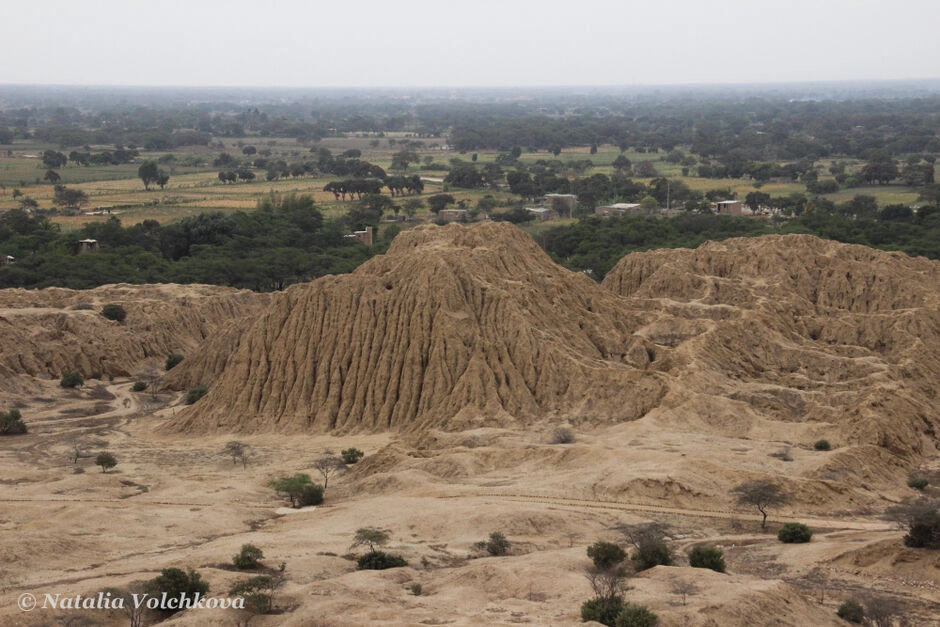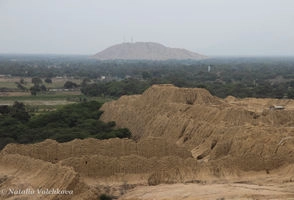
Ready to experience the wonders of Peru? Get in touch, and we’ll help you plan the adventure of a lifetime!

Ready to experience the wonders of Peru? Get in touch, and we’ll help you plan the adventure of a lifetime!

Email Consent Notice
By checking the box, you consent to PeruVisit.com collecting and processing your email address for the purpose of sending newsletters, promotional offers, and information about tours in Peru.
You acknowledge and understand that:
For full details on how we manage personal data, please refer to our Privacy Policy.
Legend of the Pyramid Valley
Seeking Protection Amidst Nature's Wrath
How to get to Lambayeque
Prepare for an exhilarating journey to the Valley of the Lambayeque Pyramids, nestled majestically in the Andean foothills, just a thrilling 500 miles (800 kilometers) north of Lima, Peru! Brace yourself for a historical rollercoaster as we unveil the secrets of Lambayeque Valley, a land that bore witness to the rise and fall of the Sicán and Chimú civilizations, all beneath the watchful gaze of the mighty Inca Empire.
The Valley of Lambayeque earned its moniker, the "Valley of Pyramids," owing to its impressive collection of around 250 pyramids, making it one of the most awe-inspiring pyramid complexes globally. Even today, archaeological excavations persist in this valley, with researchers continually discovering untouched burial sites.
Locals have bestowed a dubious reputation upon the Lambayeque Valley, dubbing it a cursed place. Yet, shamans and healers hold a contrasting view, adoring this locale for its perceived healing energy.

Nestled within a secluded valley, three ancient cities stand as silent witnesses to the mesmerizing journey of civilization. Pampa Grande, Butan Grande, and Túcume, each city, in its time, was a bustling hub of life, only to be abandoned and replaced by the next. The intriguing pattern of their existence, marked by the ritualistic burning of the city's structures atop the pyramids, sparks a sense of mystery and awe.
Pampa Grande, the eldest of the trio, is home to a lone, majestic pyramid, a testament to the city's ancient roots. As we journey forward in time, we arrive at Butan Grande, where the Lambayeque civilization, in a grand display of ambition and prowess, erected six imposing pyramids. The final destination on this historical journey is Túcume, a city sprawling across a 2.5 square miles (6.5 square kilometers) expanse, dotted with 26 pyramids. The crowning glory of Túcume is the colossal Wak-Larca pyramid. Stretching 0.43 miles (700 meters) in length, 0.17 miles (280 meters) in width, and rising 98 feet (30 meters) high, it is a marvel of ancient engineering, its area equivalent to seven football fields! At its base, a chilling discovery of 119 human skeletons, believed to be sacrificial offerings, adds a layer of intrigue to its story.
Archaeological findings suggest that each pyramid was likely the residence of a ruler, a tradition that spanned across the region. The Lambayeque, like other Andean civilizations, revered mountains as gods. In their eyes, these pyramids were earthly manifestations of these divine mountains, and the rulers residing atop them were seen as the gods' earthly representatives. As they built more pyramids, they sought divine approval and protection, their quest for spiritual significance shaping the landscape of their cities.

Seeking Protection Amidst Nature's Wrath
During that era, the region faced the harsh impacts of climatic catastrophes associated with the El Niño phenomenon. Floods, sandstorms, and droughts plagued the area, leading people to believe they had incurred the wrath of the gods, cursing their cities. By using fire, they sought purification, an attempt to rid themselves of the perceived curse. Hence, when moving to new settlements, they set ablaze their old pyramids. In their new abode, they constructed more pyramids, hoping to shield themselves from misfortune.
The arrival of Spanish conquistadors in the early 16th century and the killing of the Great Inca, who ruled these territories at the time, ultimately convinced the people of Túcume that the gods were furious. The population made a final attempt to appease the gods, sacrificing 119 individuals at the base of the main pyramid in Túcume. The nature of injuries and the positions of the skeletons allowed scientists to reconstruct the sacrificial process. Before their demise, victims were rendered unconscious with seeds from the Amala plant. While paralyzed, they remained conscious, understanding their fate but unable to resist. The priest, after slitting the victim's throat, would incise the chest and extract the heart.
Realizing that the gods had not replaced wrath with mercy, the inhabitants abandoned the city. The Valley of the Pyramids was left deserted.
To witness this archaeological marvel, make your way to Túcume, a mere 20 miles (33 kilometers) from Chiclayo.Head to Manuel Pardo Avenue in Chiclayo, catch a bus.
Or reach us out to brace yourself for a thrilling and adventure through time in the Valley of the Lambayeque Pyramids!





Get in touch, and we’ll help you plan the adventure of a lifetime!